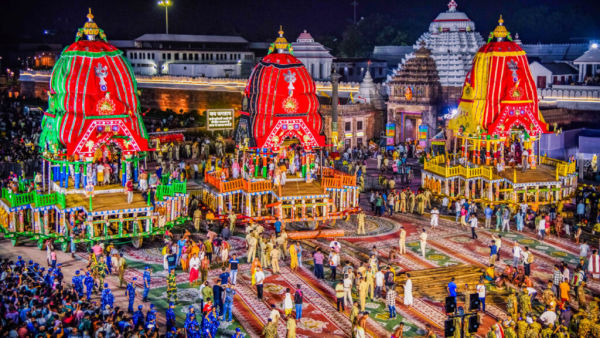

New Delhi: The Puri Jagannath Rath Yatra is not just one of the biggest festivals in the world but also a timeless tribute to devotion, courage, and cultural pride. The Rath Yatra is an ancient festival. The Ratha Yatra in Puri is the world’s oldest and largest Hindu chariot festival. It happens every year during the bright half of the lunar month of Ashadh, which falls in June or July.
The Puri Rath Yatra is approximately 3 kilometres long and spans from the Jagannath Temple to the Gundicha Temple in Puri. The three chariots carrying Lord Jagannath, his brother Balabhadra, and his sister Subhadra travel this distance during the festival.
Let us examine the history of this famous and one of the oldest and largest festivals in the world. Also, let us look at what happens if You Touch the Chariot of Lord Jagannath.
The Puri Rath Yatra, also known as the Festival of Chariots, commemorates Lord Jagannath’s annual journey from the Jagannath Temple to the Gundicha Temple in Puri, Odisha. This tradition originates from a story in which Lord Jagannath, an incarnation of Lord Krishna, wishes to visit his birthplace, Mathura. The journey also allows the deities to visit their aunt’s home, Gundicha, and connect with devotees who are unable to enter the temple.
According to the story, Lord Jagannath, along with his siblings, Lord Balabhadra and their sister Subhadra, travels to the Gundicha Temple during the Rath Yatra. It is believed that Lord Jagannath wants to spend time with his aunt each year when he returns to Mathura.
Devotees help by pulling the chariot through Puri. It is said that anyone who touches the chariot’s ropes will be blessed and have their sins forgiven.
People from all backgrounds gather to honour Lord Jagannath and take part in the celebration of his journey.
The festival is based on a well-known story about Lord Jagannath wanting to visit Mathura. To make this wish happen, the deities are taken in a procession to the Gundicha Temple, which is believed to be their aunt’s home.
Another story explains that Queen Gundicha, the wife of King Indradyumna (who built the Jagannath Temple), wanted the deities to come out of the temple. This way, those who could not enter could see them and gain salvation.
The Rath Yatra is more than just a religious event. It symbolises the journey of the deities from the temple (heaven) to the streets of Puri (earth), making them accessible to everyone. It also represents breaking down barriers between the divine and ordinary people.
The deities ride on beautifully decorated chariots (Raths) and are pulled by thousands of devotees through the streets of Puri. The three chariots are named Nandighosha (for Jagannath), Taladhwaja (for Balabhadra), and Darpadalana (for Subhadra).
The festival has deep historical roots and is mentioned in ancient texts like the Skanda Purana, Brahma Purana, and Padma Purana.
The Rath Yatra is special because it allows people from all backgrounds to participate and feel the divine presence, regardless of caste or creed. It emphasises that God is for everyone.
Touching the chariot of Lord Jagannath during the Rath Yatra festival is very auspicious. It is believed to cleanse sins and bring divine blessings. Devotees view the chariot as a representation of the Lord, making it a way to connect with him directly and receive His grace. Some legends say this act can even lead to liberation from the cycle of rebirth.